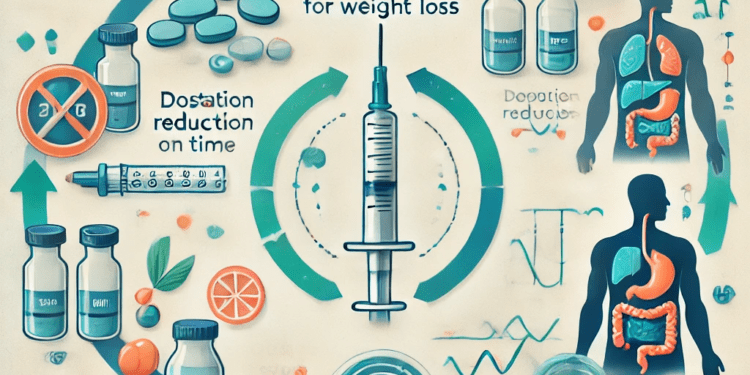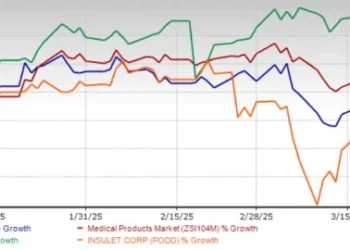Semaglutide a glucagon-like peptide-1 (GLP-1) receptor agonist has transformed diabetes and obesity management. However emerging research suggests that combining semaglutide with other peptides such as sermorelin may offer additional metabolic and therapeutic benefits. Moreover different administration methods—oral injectable and sublingual drops—affect semaglutide’s bioavailability leading to variations in absorption and efficacy.
This article explores when and why additional peptides like sermorelin can be incorporated into semaglutide therapy and examines how combining different forms of semaglutide may enhance bioavailability. By thoroughly understanding these mechanisms clinicians and patients can tailor their approaches to optimize metabolic outcomes.
The Science Behind Semaglutide and Peptide Therapy
1. How Semaglutide Works
Semaglutide mimics GLP-1 a hormone that plays a crucial role in blood sugar regulation appetite suppression and weight management. It works by:
- Stimulating insulin secretion in response to glucose.
- Inhibiting glucagon release which reduces hepatic glucose production.
- Slowing gastric emptying to promote satiety.
- Influencing brain centers involved in appetite regulation.
- Enhancing fat oxidation and energy expenditure through neurohormonal pathways.
2. The Role of Other Peptides in Enhancing Semaglutide’s Effects
Peptide therapy has gained popularity due to its ability to regulate metabolic and hormonal pathways. Sermorelin a growth hormone-releasing hormone (GHRH) analog is one such peptide that may be combined with semaglutide to optimize health outcomes.
Why Add Sermorelin to Semaglutide?
- Growth Hormone Synergy: Sermorelin stimulates the pituitary gland to release growth hormone (GH) which plays a crucial role in metabolism muscle growth and fat loss.
- Enhanced Fat Loss: GH and GLP-1 receptor activation together promote greater lipolysis and energy utilization.
- Muscle Preservation: While semaglutide primarily targets fat reduction sermorelin supports lean muscle mass retention which is critical in weight loss protocols.
- Improved Recovery and Sleep: Sermorelin enhances sleep quality cellular repair and neuroendocrine balance complementing semaglutide’s metabolic effects.
- Anti-Aging and Longevity Benefits: Growth hormone plays a crucial role in cellular regeneration bone density maintenance and overall vitality.
3. Other Peptides That May Be Considered with Semaglutide
- CJC-1295: A long-acting GHRH analog similar to sermorelin but with a prolonged half-life increasing convenience and effectiveness.
- Ipamorelin: A ghrelin mimetic that works synergistically with GLP-1 agonists for appetite modulation digestive balance and enhanced metabolic function.
- BPC-157: A peptide known for its regenerative properties potentially countering gastrointestinal side effects of semaglutide and enhancing gut health.
- Tesamorelin: Primarily used for fat reduction and lipolysis particularly in visceral adipose tissue offering added metabolic benefits alongside semaglutide.
Combining Different Forms of Semaglutide for Enhanced Bioavailability
1. Injectable vs. Oral Semaglutide
The most well-known forms of semaglutide include:
- Injectable (Ozempic Wegovy): Provides high bioavailability with a long half-life and consistent absorption.
- Oral (Rybelsus): Utilizes an absorption enhancer (SNAC) to facilitate uptake in the stomach though bioavailability is lower (~1% vs. ~89% for injectables).
- Sublingual and Nasal Forms (Emerging Options): Experimental sublingual formulations may improve absorption efficiency by bypassing first-pass metabolism.
Why Combining Forms May Improve Absorption
Pharmacokinetics suggests that using multiple delivery routes can maximize systemic availability. Potential strategies include:
- Morning Oral Semaglutide + Weekly Injection: Provides continuous GLP-1 activation while sustaining peak plasma levels.
- Sublingual Drops with Injections: Enhances absorption via mucosal membranes potentially allowing lower doses of injectables.
- Nasal Spray and Oral Combination: Emerging data suggest that nasal formulations may further enhance bioavailability due to rapid absorption through mucous membranes.
Practical Considerations for Patients and Clinicians
1. Who Should Consider Adding Sermorelin to Semaglutide?
- Patients with poor muscle retention or sarcopenia who need growth hormone support.
- Those experiencing fatigue poor sleep or slow recovery that may be improved with GH stimulation.
- Individuals looking to enhance fat loss while maintaining lean muscle mass.
- Older adults or those seeking anti-aging benefits given growth hormone’s role in cellular repair and longevity.
2. How to Transition Between Forms of Semaglutide
- Switching from Oral to Injectable: Patients should taper oral doses while introducing injectable forms to avoid excessive GLP-1 receptor stimulation.
- Incorporating Sublingual Forms: If adding sublingual semaglutide dosage adjustments should be made based on pharmacokinetic data and patient response.
- Adjusting for Meal Timing: Oral semaglutide requires fasting conditions whereas injectables can be administered independently of meals.
3. Monitoring and Adjusting Treatment Plans
- Regular blood glucose and HbA1c monitoring to assess metabolic improvements.
- Evaluating lean muscle mass retention vs. fat loss when adding peptides like sermorelin.
- Tracking side effects (nausea gastric discomfort or hormonal fluctuations) when using multiple semaglutide forms.
- Adjusting dosages based on lifestyle dietary habits and physical activity levels.
Potential Risks and Considerations
1. Overstimulation of GLP-1 Receptors
Combining different semaglutide forms must be carefully managed to prevent excessive receptor activation which can lead to severe gastrointestinal effects including nausea and bloating.
2. Growth Hormone-Related Side Effects
Adding sermorelin or similar peptides may lead to fluid retention joint pain insulin resistance or disruptions in glucose metabolism in some patients. Monitoring is crucial to balance benefits and risks.
3. Cost and Availability
Peptide therapies can be expensive and may not always be covered by insurance. Patients should explore cost-effective options with their healthcare providers such as compounding pharmacies or clinical trial participation.
Conclusion
Semaglutide’s impact on metabolic health can be further optimized by strategic peptide additions such as sermorelin and by leveraging different administration routes to enhance bioavailability. By understanding the synergistic effects of GLP-1 receptor agonists with growth hormone-releasing peptides and optimizing drug delivery methods patients and clinicians can achieve better therapeutic outcomes.
Future research will continue to clarify the ideal combinations and formulations for maximizing semaglutide’s benefits while minimizing side effects. For now individualized approaches remain key to ensuring safe and effective peptide therapy.















